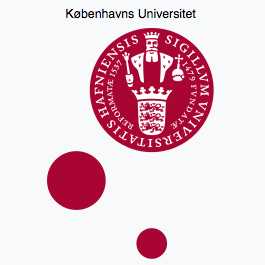
Scholars will explode the myth of The New Testament
Bible scholars across the world have for many years believed that two of the Gospels of the New Testament – The Gospel of St. Matthew and St. Luke respectively were partly based on the content of a supposedly lost scripture referred to as “Q”. In a new research project, researchers from the Faculty of Theology will attempt to establish that this lost scripture never existed.
The Gospels as re-written Bible
The Research Project at the University of Copenhagen, which has just been granted 4.7 million kroner by the Velux Foundation, has been titled “The Gospels as re-written Bible”. During the next tree years a group of scholars will map the development of the four gospels in order to establish that the Gospel of Luke is not, as believed so far, a contemporary of the Gospel of Matthew, and that the shared content of the two is not to be explained by the existence of a lost scripture, but by the fact that the author of St. Luke’s Gospel used St. Matthew’s Gospel as well as that of St. Mark as basis for his own scripture.
Contact for this story is Professor Morgens Müller, Faculty of Theology.
See the full article here.
If you enjoyed this post, please consider donating to Vridar. Thanks!

I’m hoping they mention something about possible Mark[ion] priority to Luke
I intimated before, in the post on “Mark” that I don’t follow the Q juggernaut.
For starters its just too convenient for the apologists.
When confronted with the probability of “Markan” priority they are faced with losing the ability to claim any of the synoptics as having ‘eye-witness’ status cos the legend of “Markan” authorship has never claimed such.
At best, and its a strained best, he gets to be some sort of Petrine biographer who is then copied and edited by the later gospellers.
There goes a lot of credibility, including the identity of “Matthew” as an original disciple.
Q enables apologists to escape that conundrum and postulate early Q [Q1 etc] as being pre-Markan traditional material. No evidence required, assertion of such is sufficient. Mack, for example, constructs entire early communities in this manner.
Its fundamental absurdity is ignored as Qist scholars dissect material pedantically that is more easily explained as “Luke” simply copying and amending both “Mark” and “Matthew” in a manner typical of writers of the day who used multiple sources as presented by Olson.
Despite being envisaged as a major document that guided the writings of at least 2 and possibly all 3 synoptics who are usually presented as belonging to different settings and times, this alleged document Q which must therefore have been highly valued in many places and times has simply disappeared without trace.
Too convenient.
The most succint verdict on the Q hypothesis I have read came from a book on “Luke” written by a scholar named Dunn who stated that he had no need for the Q hypothesis in his study of ‘Luke’.
What a bizarrely over-the-top headline!
I was wondering if they were going further and getting into more of the thing Thomas Thompson did with The Messiah Myth — unfortunately his extension of OT studies into the NT was marred by some gaffes over some standard NT basics. But the only hint of that is in the headline. Felt cheated, too.
Well, I’m certainly pleased they favor the Farrer hypothesis and are even seriously considering John as another source for Luke. I look forward to their research.
Anything to get around the simplest explanation, i.e. that the proto-Orthodoxy took Marcion’s gospel and split it into four and interpolated these four with a bunch of twisted and misused OT material to establish a positive link between Jesus and the OT that wasn’t there before. Isaiah 7-8 in context is about Mahershalalhashbaz to be born as a sign of when Pekkah and Rezin the kings of Damascus and Samaria would be defeated in Ahaz’ lifetime, Micah 5 is about Zorobabel to be the man to defend Palestine against Assyrian incursion after the return from Exile, Jeremiah 31 is about Babylonian exile causing Rachel to weep, Hosea 11:1 is a historical statement about the Exodus. Yet when the proto-orthodox split about some of Marcion’s content in order to create what we now call ‘the gospel of Matthew’ they also interpolated it with misinterpretations of these passages in order to create a false positive relationship between Jesus and the OT, namely the ‘orthodox’ idea that he was the Messiah of the Jews in opposition to the earlier Marcionite idea that he was the higher God who came to oppose the God of the Jews. And in the process, the chapter where he says things like ‘the law says X, but I say Y’ in the sermon on the mount was also interpolated with ‘think not that I have come to destroy the law’ to keep people from seeing that originally that is exactly what he was understood as having come for! Any kind of hoop that has to be jumped through to get away from this obvious truth, the dishonest and clueless ‘scholars’ and self-appointed experts will go for.
This has already been done, of course, by the late and great Michael Goulder, which regretfully did not stop English editions of ‘Q’ appearing in Barnes and Noble.
Marcion’s gospel was Q.